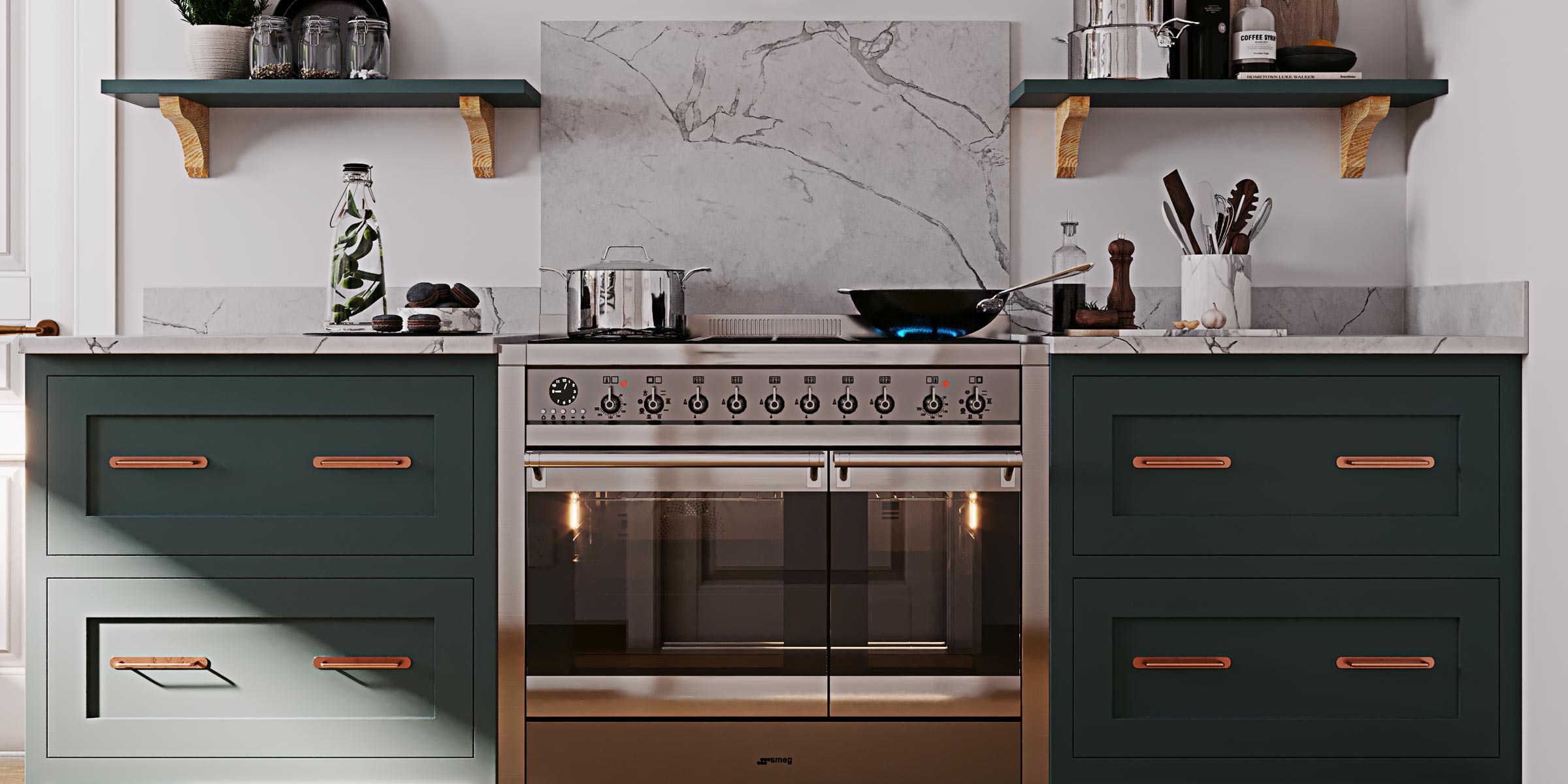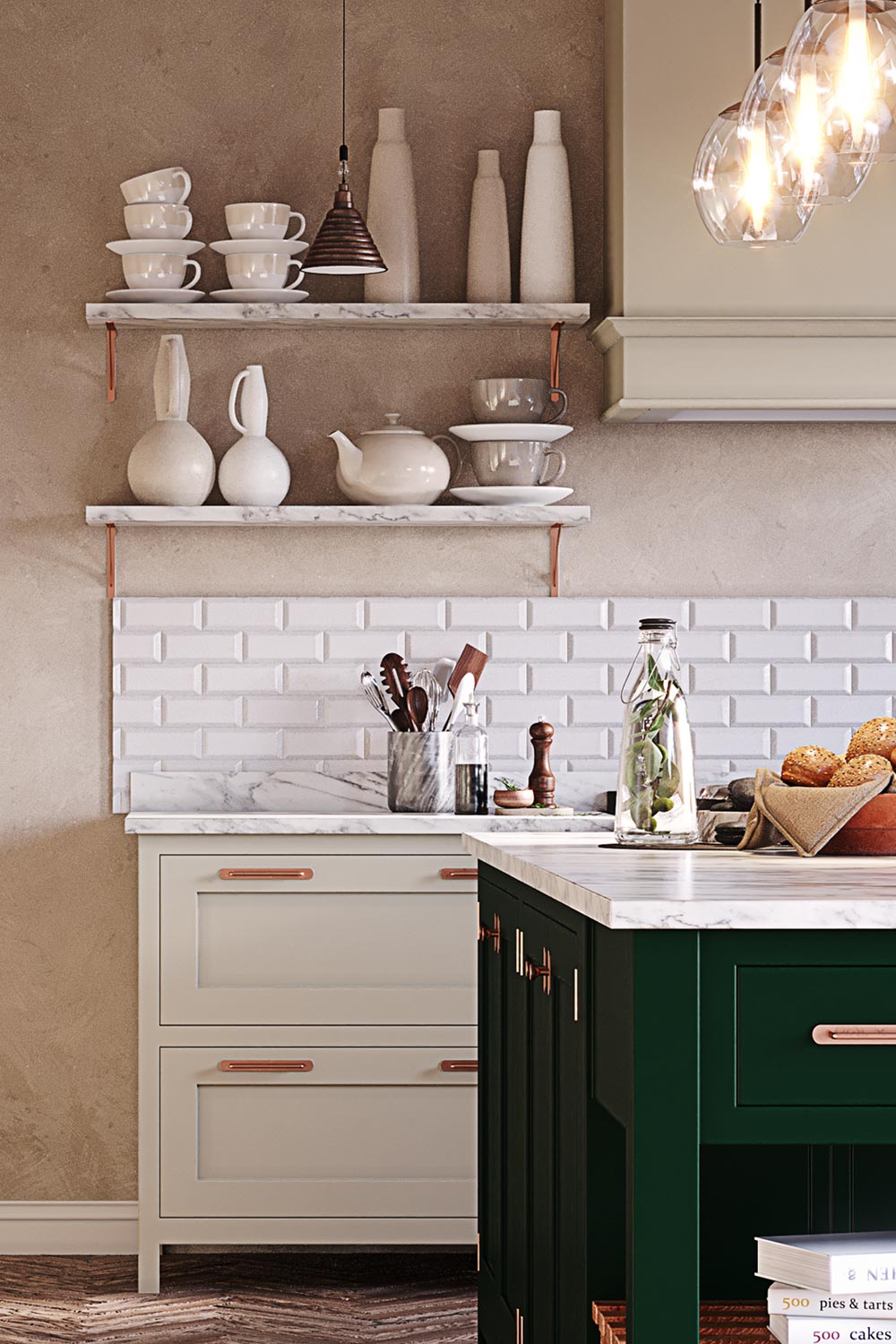Use code crusoe10 to get 10% off your first purchase
The idea that a kitchen is ‘just’ a place to cook is fast becoming outdated. Kitchens are so much more than a place solely for preparing food. The modern kitchen is the space for entertaining, dining, socialising and living and is truly the heart of the home. A kitchen’s design is crucial to ensure that the space works perfectly for you and your lifestyle.
If you love the look of a freestanding kitchen but aren’t sure where to start with designing your own, here at Crusoe Kitchens we can help you every step of the way with our ultimate professional’s kitchen design guide.
Made in Britain
Simple Installation
Timeless
Exceptional Quality
Handmade
First things first – how to choose the design of your kitchen. This is the tricky bit as there is a seemingly endless choice of kitchen designs out there – so how do you narrow it down to find one that works for you?
We advise looking at kitchen design inspiration ideas to really get your creative juices flowing. Looking at other kitchen designs can give you a good starting point of what you do and don’t like, making it easier to pin down what you think would work for you and your home.
The kitchen is the cornerstone of family life and a cleverly designed kitchen should reflect that. A good design should support the natural flow of life, no matter what the kitchen size. Clever design features and carefully considered freestanding elements can really take your kitchen to the next level, dictating the overall functionality and flow of the greater space in which it sits.
Whilst it’s important to consider your needs as a family now, it’s crucial to consider what your needs might be in the future to ensure that your kitchen is able to ebb and flow alongside the tides of time. Ensuring that your chosen kitchen is for life is not only a cost-effective way of working, but it also encourages sustainability and a more responsible way of shopping.
Choosing a timeless, functional design which offers versatility and flexibility is the best way to achieve this. When choosing a colour palette for your kitchen, aspire for colourways which make your kitchen feel less like a workspace and more like a space for living. Warm, neutral colours which connect your kitchen to the natural world can create a space which is easy on the eye and makes for a relaxing backdrop. Using other kitchen design ideas for inspiration will give you an idea of what is possible- when you choose freestanding kitchen units, the freedom and design options available give you so much scope to make your kitchenspace reflect your individuality.


Before you start designing your dream kitchen, consider the following questions to ensure that your kitchen design works for you, and works for life:

When designing your kitchen we advise that you start with YOU. Make sure that your kitchen designer carefully considers the needs of you and your family, and takes into consideration how you will be using the space. Most importantly, make sure that your new kitchen design makes you smile. Because if it doesn’t make you happy, what’s the point? Whether you are installing a new kitchen or remodelling a current one, make sure that your cookspace is as inspirational and individual as you.
© 2024 Crusoe Freestanding Kitchens – a division of Olive & Barr. Company Number: 12303940 / VAT Number: 402 1494 39